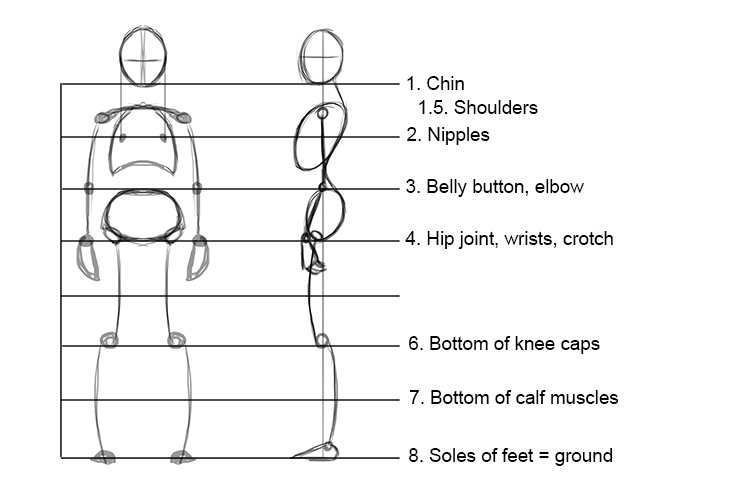How to Draw a Body
Start by drawing a rough oval shape. Measure the oval and draw a line the length of seven more, marking where each would sit.
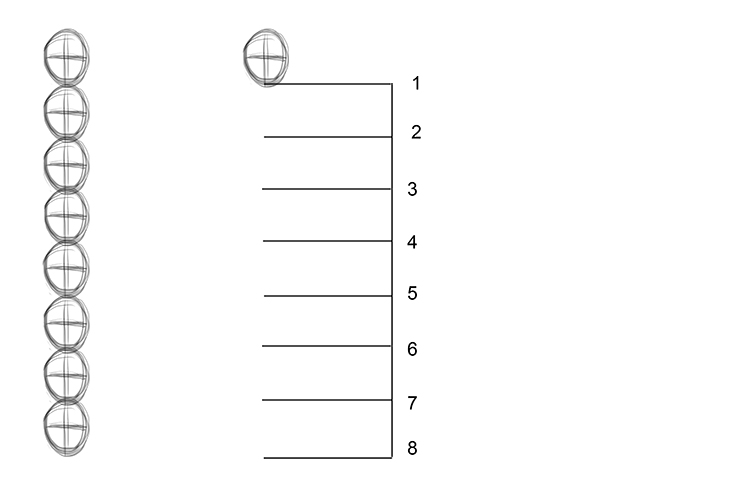
Between lines 3 and 4, draw a slightly flattened circle for the pelvic bone, with two very small circles sitting on line 4 for the hips.
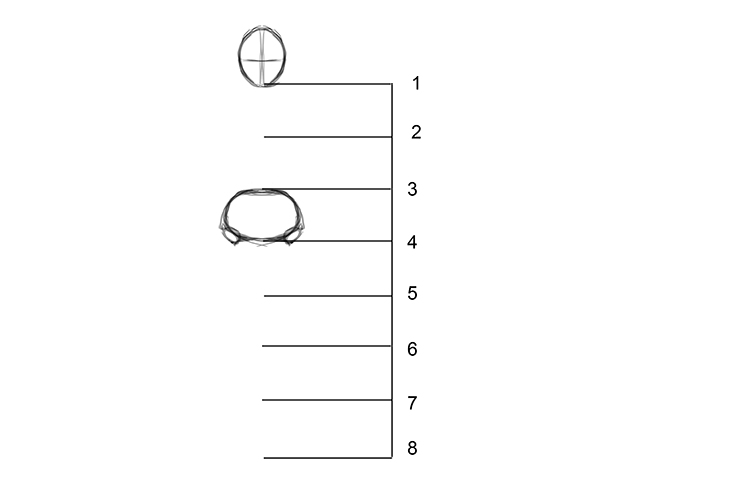
On line 6, draw two small circles for the knees and connect them with a line from the hips down to the inside of the knee circles. On line 8, draw two more circles for the feet and connect them to the knees with a line from the outside of the knees to the middle of the feet.
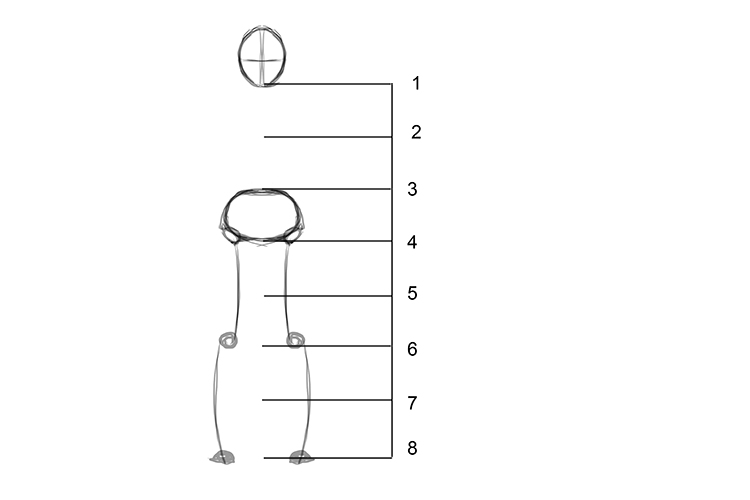
Between lines 1 and 2, draw a line with a slight curve down. This line should be hip-width, but the addition of circles for the shoulders will make it wider.
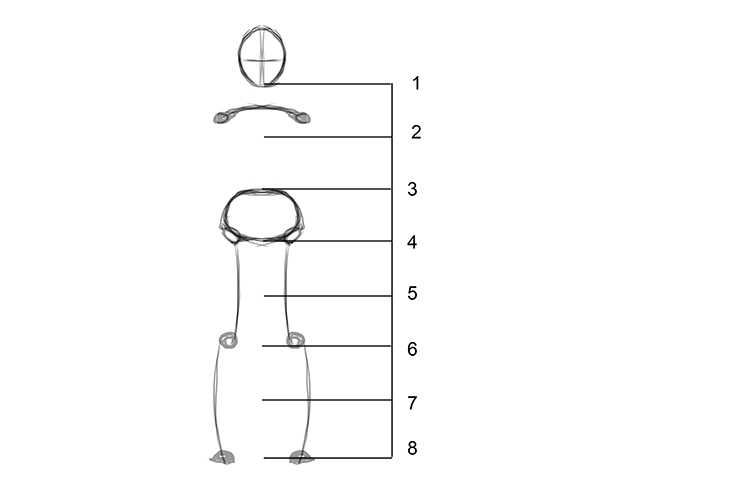
Next, draw the ribcage. The top of the ribcage should be touching the line for the shoulders. The highest point of the bottom of the ribcage should be halfway between lines 2 and 3, and the lowest points on either side should be about three-quarters of the way down between 2 and 3.
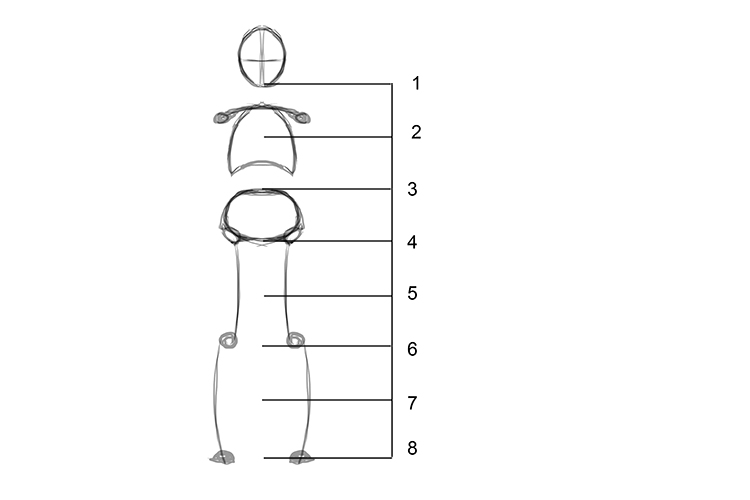
The elbow joint sits at line 3, with the wrists at line 4. The hands hang down to just above line 5.
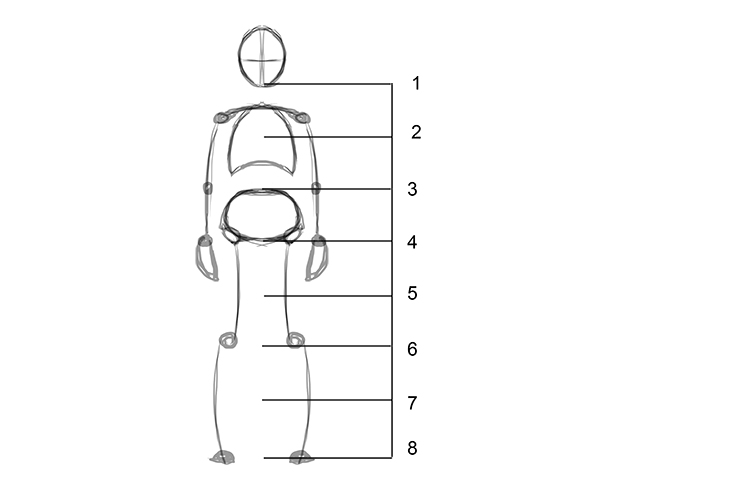
Everyone is built and shaped differently but, generally speaking, the nipples are in line with the ears and line 2.
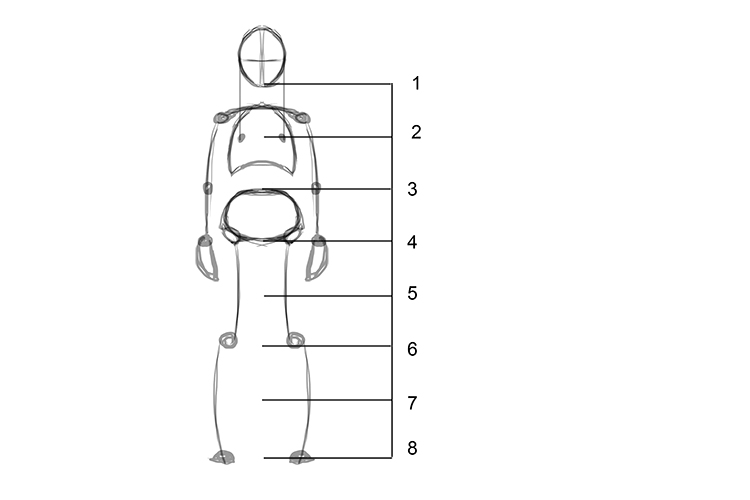
It doesn't matter if the person is muscular, very thin or very fat, the skeleton underneath will always remain the same.
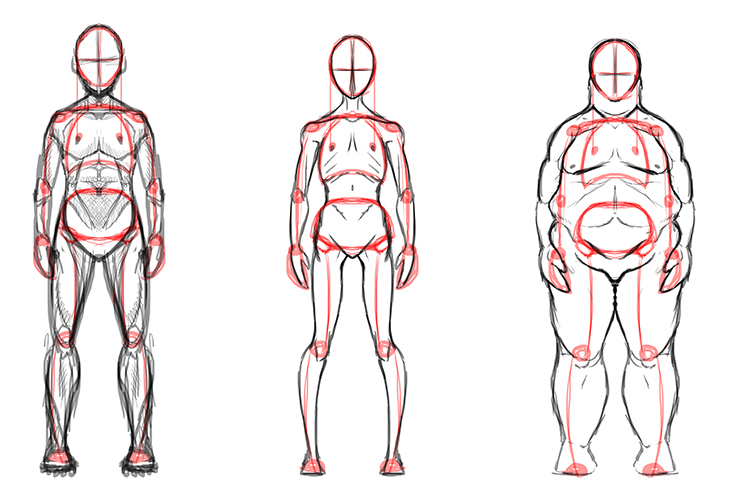
Everybody has different posture and so the joints will line up differently depending on your figure, but this is the easiest way to remember proportions and where the joints are.
To draw the body in profile, first draw the head. The top of the head, shoulder, pelvic bone and knee are all roughly in line with each other.

The spine goes from the base of the skull in a curved line that goes out past the point of the shoulder, back in to meet the vertical line of the head to the knee at the small of the back, and then out again where it meets the pelvic bone.
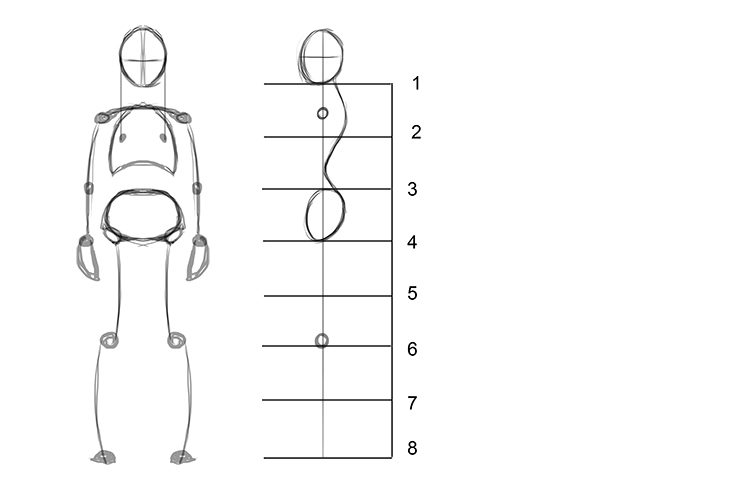
The legs look much the same as they do from the front, with the hip-to-knee line sitting in front of the knee-to-ankle line.
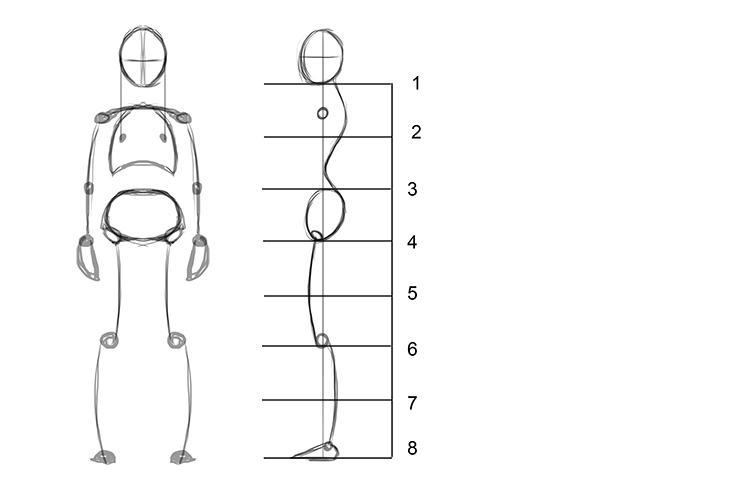
The ribcage starts at the shoulder joint and hangs down over line 2, halfway down to line 3. From the profile view, the ribcage is a flattened oval.
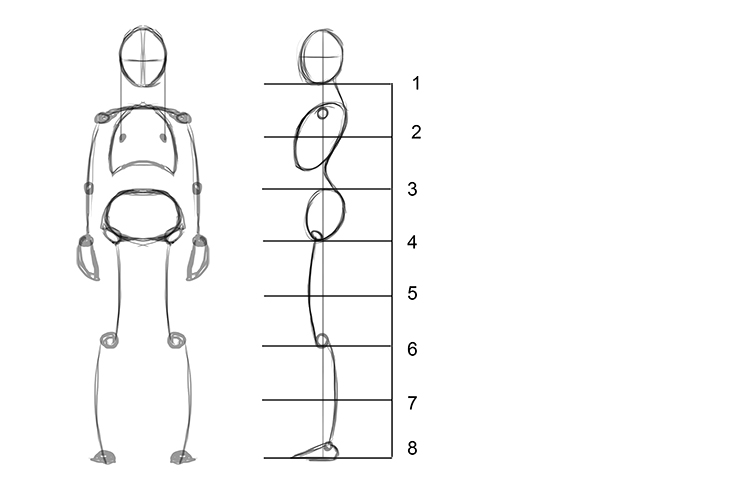
The arms hang down from the shoulder joint. A relaxed arm isn't completely straight so from the elbow joint, which sits on line 3, the arm will tilt forwards slightly, with the hand hanging from the wrist joint on line 4.
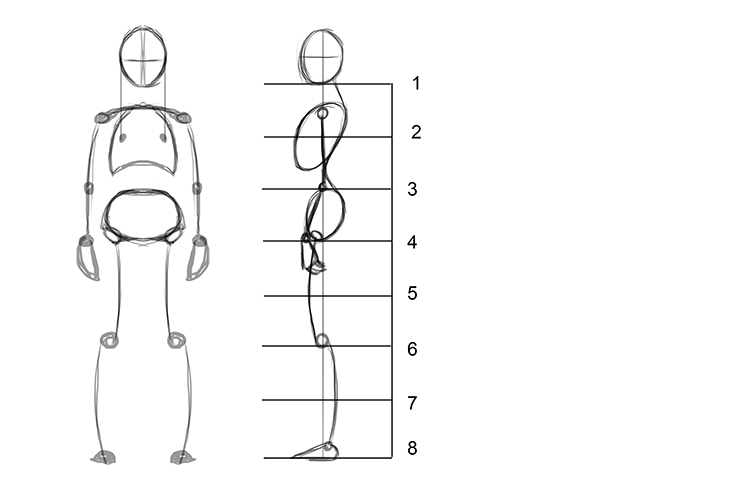
Again, it doesn't matter if your figure is muscular, skinny or fat, the skeleton underneath will always remain the same.
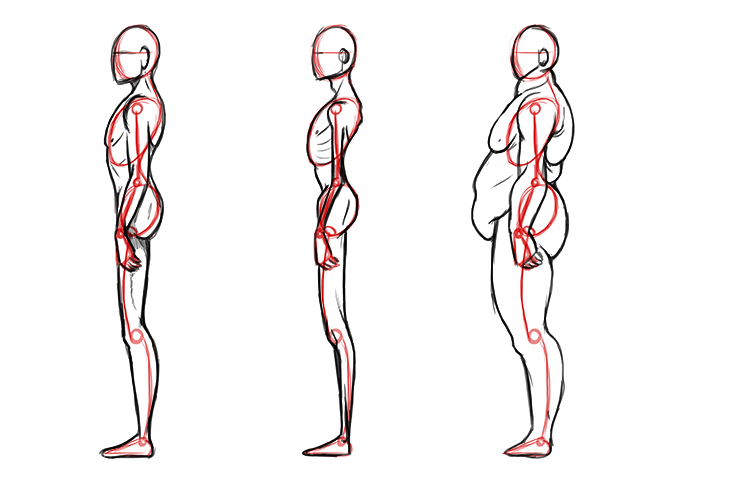
The length of the foot is roughly the length of the forearm when the arm is outstretched and the length of the hand is the length of the forearm when the arm is bent.
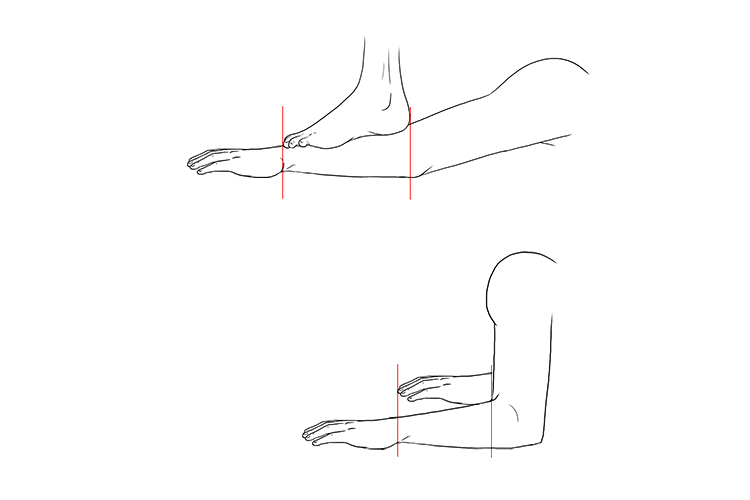
This completes the basic, undifferentiated human proportions, and here's a diagram to sum up the above.
